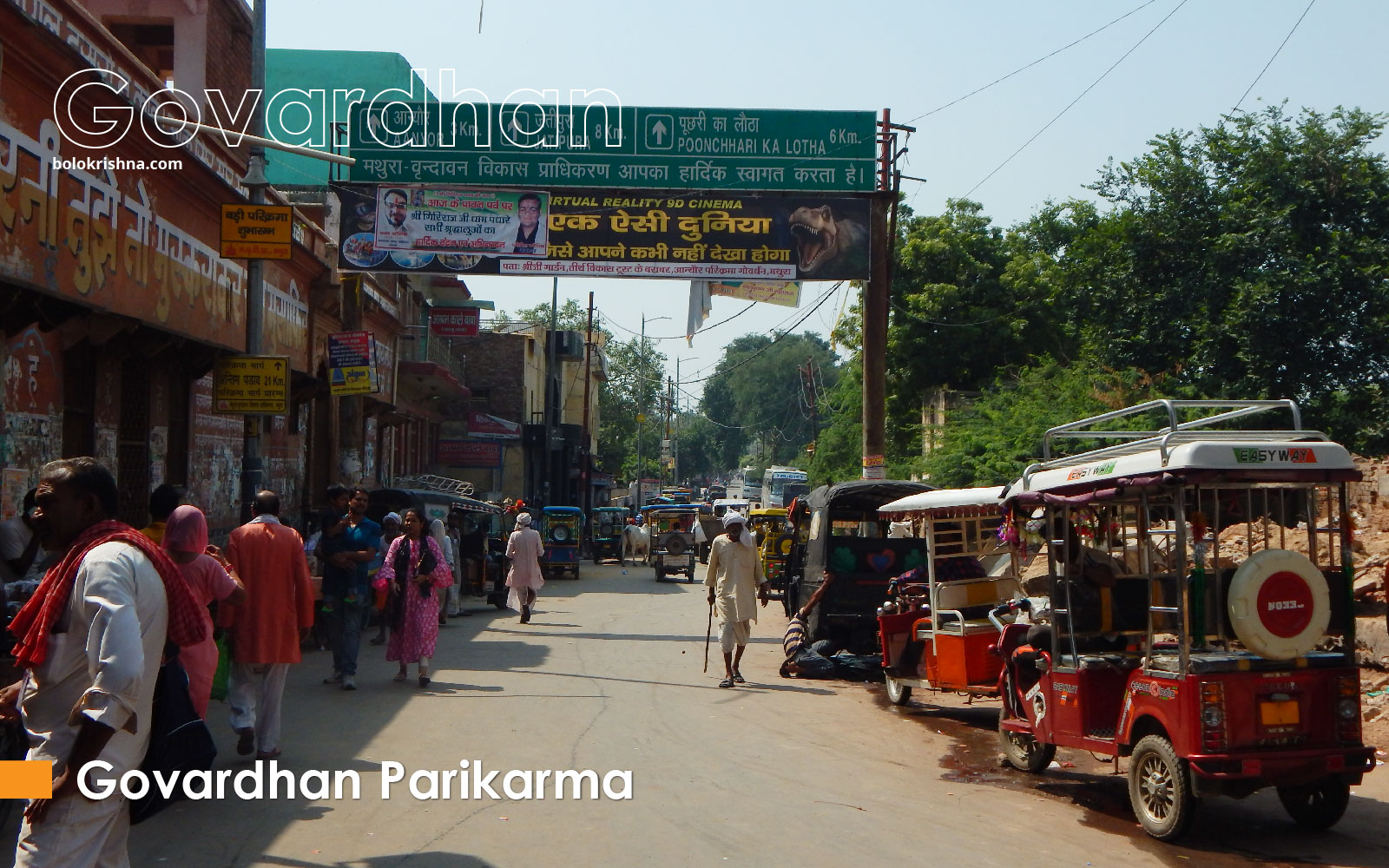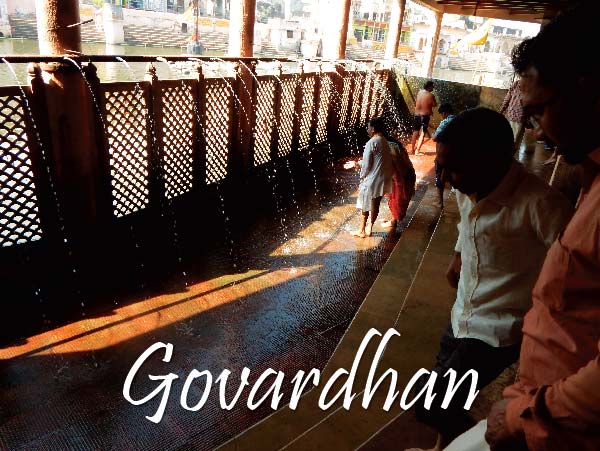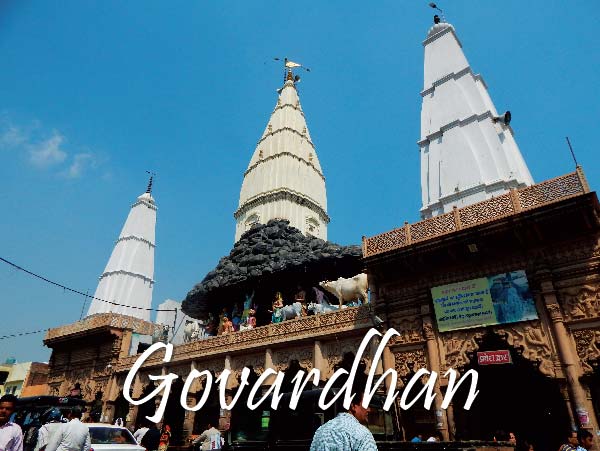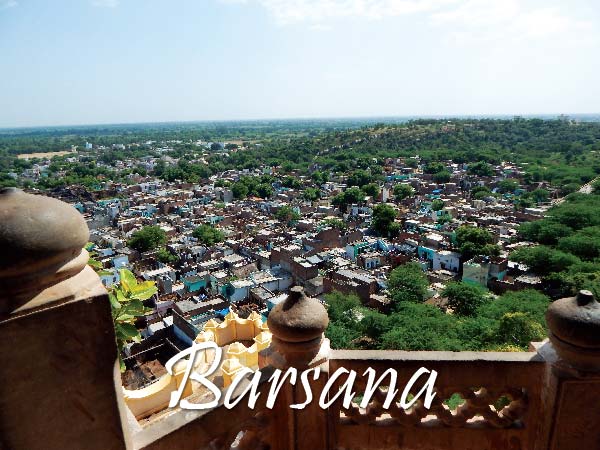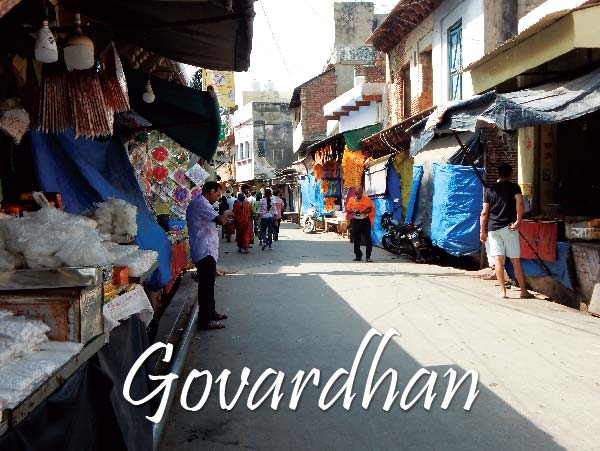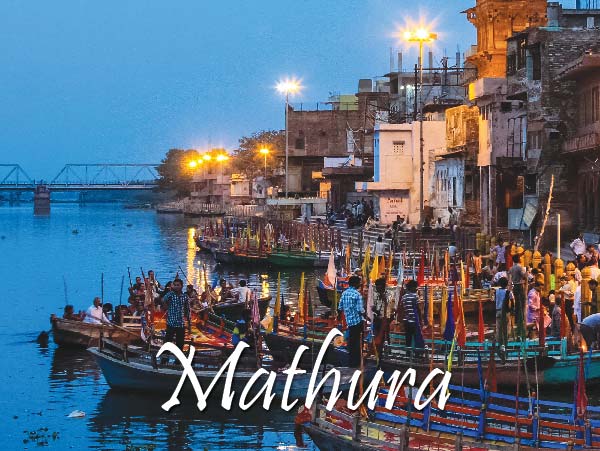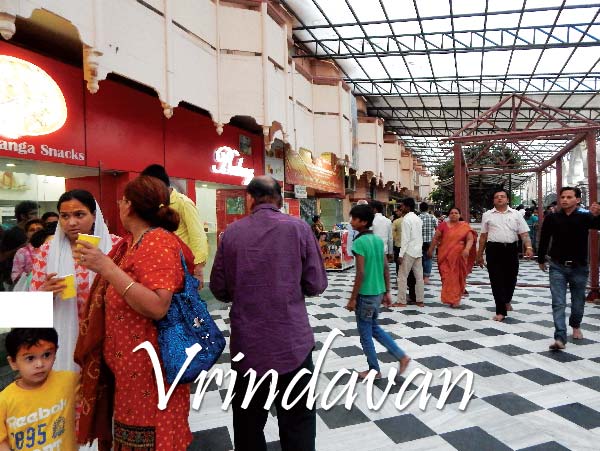Badi parikarma Govardhan Parikarma starting point.

Govardhan Parbat: The Sacred Hill of Krishna’s Divine Leela For deeper connection with the divine realm
Govardhan Parvat
Govardhan Parbat, also known as Govardhan Hill, holds immense spiritual and cultural significance in Hinduism, particularly within the Vaishnav tradition. This sacred hill, located near the town of Vrindavan in Uttar Pradesh, India, is intimately associated with the divine pastimes (leelas) of Lord Krishna. The legend of Krishna lifting Govardhan Parbat to protect the villagers of Vrindavan from the wrath of Indra is one of the most well-known stories from Hindu mythology. The hill is not just a natural feature, but a symbol of Krishna’s divine love, protection, and the bond he shares with his devotees.
In this article, we will explore the spiritual, historical, and cultural significance of Govardhan Parbat, the practice of Govardhan Parikrama, and why it continues to be one of the most important pilgrimage sites for Krishna devotees.
The Legend of Govardhan Parbat: Krishna’s Divine Protection
The Story Behind Krishna Lifting Govardhan Parbat
According to the Srimad Bhagavatam, one of the most revered texts in Hinduism, the legend of Govardhan Parbat is centered around Krishna’s divine act of protection for the people of Vrindavan. In the ancient times, the villagers would annually perform a grand ritual to honor Lord Indra, the god of rain, seeking his blessings for bountiful rains and a good harvest. However, young Krishna, full of wisdom, questioned this practice. He suggested that instead of worshiping Indra, the villagers should worship Govardhan Parbat and the natural resources it provided—grass for the cattle, fruits, and water from its streams.
This change in worship angered Indra, who sought to punish the villagers by unleashing a furious storm. Torrential rains threatened to flood Vrindavan, and the frightened villagers sought refuge in Krishna. To protect his devotees, Lord Krishna lifted the massive Govardhan Parbat on the little finger of his left hand, sheltering the people and their cattle under it for seven days. This divine act not only humbled Indra but also revealed Krishna’s supreme power and his unconditional love for his devotees.
Govardhan Leela: A Symbol of Devotion and Protection
The Govardhan Leela teaches profound lessons in devotion, humility, and protection. For Krishna devotees, this story is a reminder that the divine is always watching over them, ready to protect and guide them through difficult times. It also illustrates Krishna’s principle that true worship is directed toward nature and those elements that sustain life.
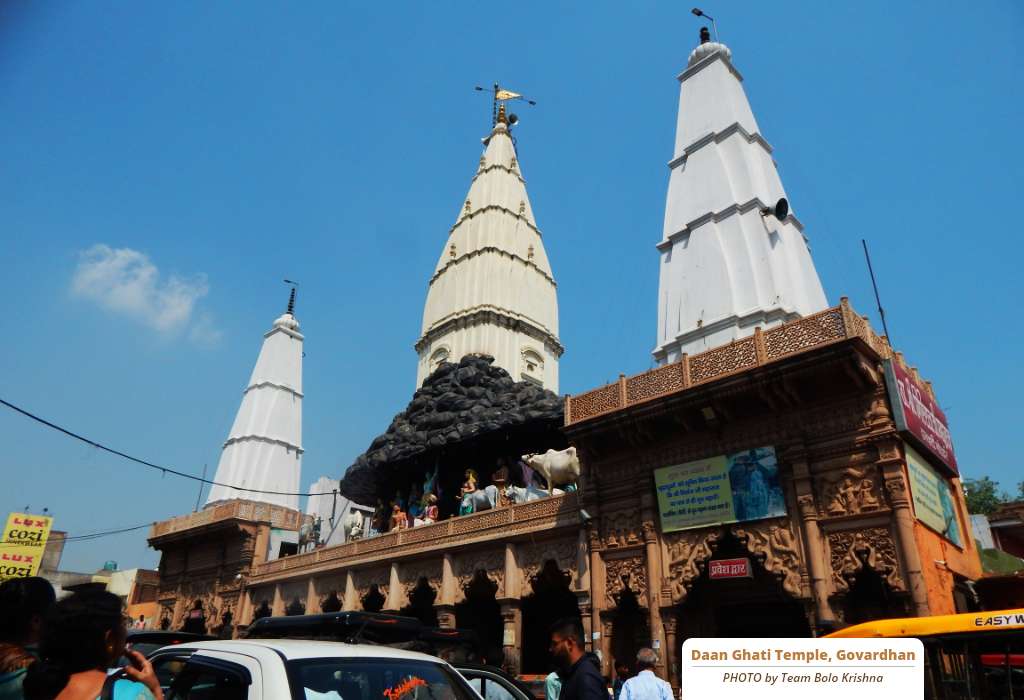
Significance of Govardhan Parbat in Vaishnavism
A Sacred Site for Krishna Devotees
For Vaishnavas, followers of Lord Vishnu, Govardhan Parbat is not just a hill but a living deity. It is often referred to as Giriraj, meaning the King of Mountains. Devotees believe that the hill is an incarnation of Lord Krishna himself, and as such, it is worshipped with deep reverence. Every year, millions of pilgrims visit Govardhan Parbat to perform the Govardhan Parikrama, a circumambulation of the hill that holds immense spiritual significance.
Govardhan Puja: Honoring the Hill
Govardhan Puja, celebrated the day after Diwali, marks the day when Lord Krishna lifted Govardhan Parbat. On this day, devotees offer prayers, flowers, and food to the hill, symbolizing their gratitude for the divine protection Krishna provided. The festival is also known for the Annakut (mountain of food), where devotees prepare a large variety of dishes to offer to the hill and later distribute as Prasad.
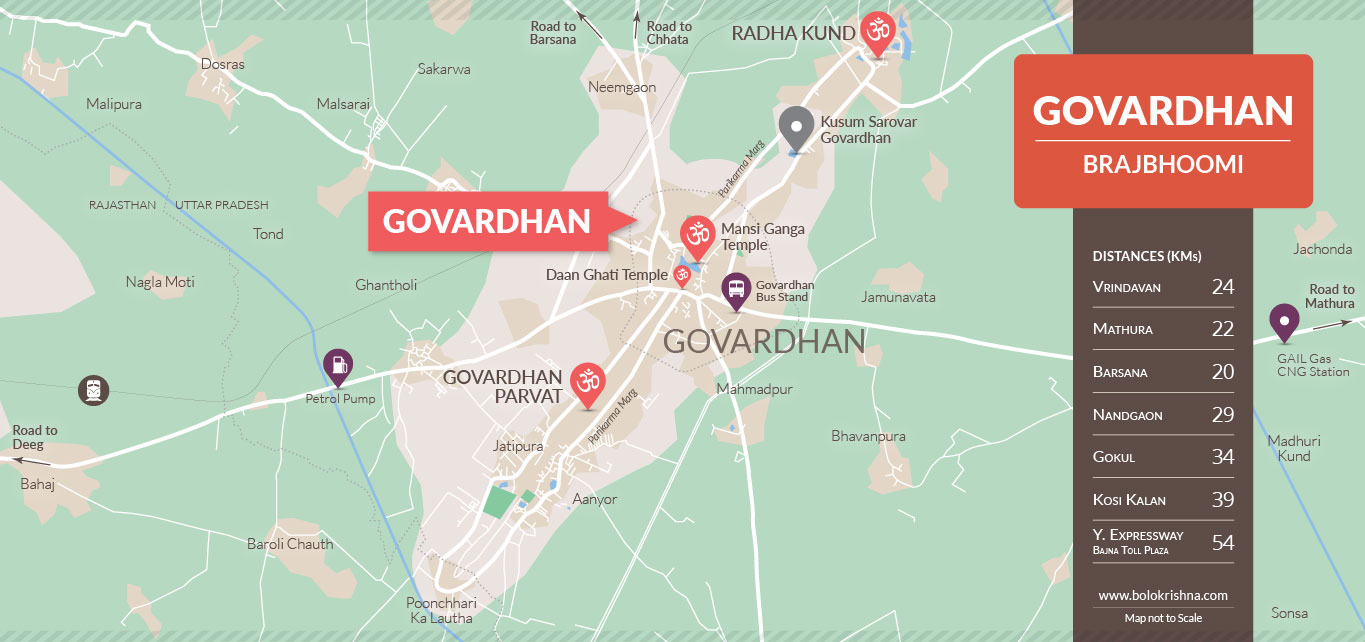
Govardhan Parikrama: A Pilgrimage of Devotion
The Spiritual Journey Around Govardhan Parbat
One of the most important religious practices associated with Govardhan Parbat is the Govardhan Parikrama, a ritualistic circumambulation of the hill. This sacred practice is performed by millions of devotees, particularly during auspicious times such as Kartik Maas and Govardhan Puja. The Parikrama is a 21-kilometer pilgrimage that takes devotees around the hill, starting and ending at Manasi Ganga, a holy pond located at the base of the hill.
Significance of Performing Govardhan Parikrama
Performing the Govardhan Parikrama is considered to be one of the most spiritually rewarding acts for devotees of Lord Krishna. It is believed that walking around the sacred hill brings immense spiritual merit, washes away sins, and deepens one’s connection with Krishna. Many devotees perform the Parikrama barefoot, as an act of humility and reverence for the sacred ground they walk on.
The Parikrama route passes through several important religious sites, including Radha Kund, Shyam Kund, Govind Kund, and Manasi Ganga, each of which holds its own unique significance in the life of Lord Krishna. Pilgrims often stop at these sites to offer prayers, take holy dips, and seek blessings.
Types of Parikrama
There are different ways in which devotees perform the Govardhan Parikrama. The most common is walking around the hill while chanting the holy names of Krishna. Some devotees perform the Dandavat Parikrama, where they circumambulate the hill by lying on the ground, rising, and then repeating the process. This act of devotion is extremely physically demanding and is considered to bring immense spiritual rewards.
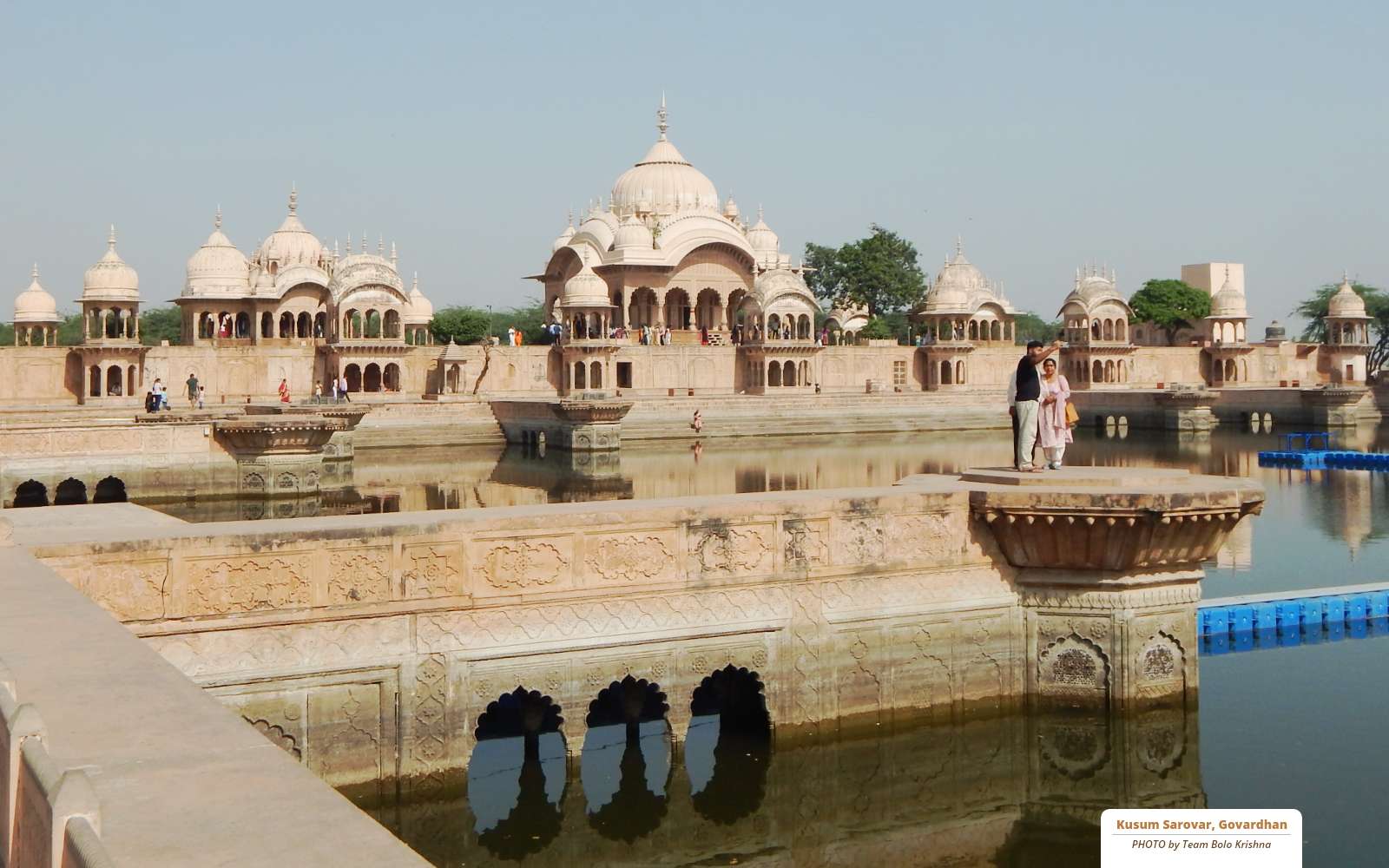
Physical and Geographical Aspects of Govardhan Parbat
Govardhan Hill’s Geography
Govardhan Parbat is a sandstone hill that stretches over a length of 8 kilometers and reaches a height of around 80 feet at its tallest point. Though modest in size compared to other natural formations, the hill’s spiritual significance far outweighs its physical dimensions.
Sacred Sites Around Govardhan Hill
Several important religious sites are located around Govardhan Parbat, making it a hub of spiritual energy and devotion. Some of the key sites include:
-
Radha Kund and Shyam Kund: These twin ponds are among the most sacred places near Govardhan Hill. According to legend, Radha Kund was created by Radha herself, and Shyam Kund was created by Krishna. Taking a dip in these waters is believed to purify the soul.
-
Manasi Ganga: A large lake situated at the foot of Govardhan Parbat, believed to have been created by Krishna’s mind (Mansi). Pilgrims often begin their Parikrama by taking a holy dip in this lake.
-
Govind Kund: Another sacred water body where Lord Indra is said to have offered his prayers to Krishna after the Govardhan Leela. This site is significant for its association with Krishna’s forgiveness toward Indra.
Govardhan Parbat: A Living Deity
Unlike most hills or mountains, Govardhan Parbat is worshipped as a living deity. Devotees offer prayers, flowers, and food to the hill, considering it an incarnation of Lord Krishna. Some pilgrims even carry small stones or pebbles from the hill back to their homes, treating them as sacred objects.
In the Bhagavad Gita and other ancient texts, Govardhan Parbat is described as Giriraj, the King of Mountains. The reverence shown to this hill is unparalleled, as it continues to inspire devotion and spiritual awakening among Krishna’s followers.
Govardhan Puja and Annakut Festival
Govardhan Puja is a major festival celebrated on the day after Diwali, commemorating the day Krishna lifted the hill. During this time, devotees prepare a large variety of vegetarian dishes to offer to the hill in the Annakut festival. The food is later distributed as Prasad, symbolizing the divine blessings of Krishna.
How to Reach Govardhan Parbat
Accessibility and Travel Information
Govardhan Parbat is located approximately 22 kilometers from Mathura, the birthplace of Lord Krishna. The closest airport is in Delhi, about 160 kilometers away. From Mathura, pilgrims can reach Govardhan by road, either via private vehicles, buses, or auto-rickshaws.
Best Time to Visit Govardhan Hill
While Govardhan Parbat can be visited throughout the year, the best time to perform the Govardhan Parikrama is during the winter months, from October to March. During this time, the weather is cool and pleasant, making it easier for devotees to complete the 21-kilometer journey.
The most significant days for pilgrimage are Govardhan Puja (the day after Diwali) and Kartik Purnima, during which thousands of devotees gather to perform the Parikrama.
Conclusion
Govardhan Parbat is a symbol of Krishna’s love, protection, and divine grace. Whether it’s through the Govardhan Leela, the sacred Govardhan Parikrama, or the annual celebration of Govardhan Puja, the hill continues to inspire devotion and faith among millions of devotees worldwide. It stands not only as a geographical landmark but as a living embodiment of Lord Krishna, reminding us of the eternal bond between the divine and his devotees.
Temples Temples of Govardhan
Mansi Ganga Temple Govardhan
Daan Ghati Temple Govardhan

